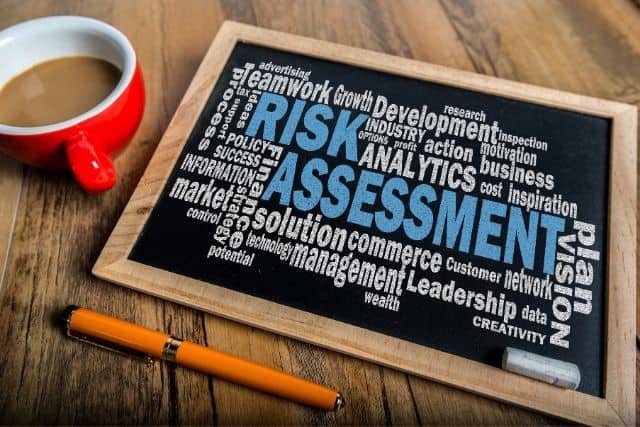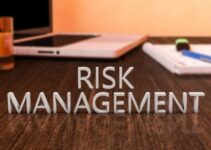What is the Risk Assessment Matrix?
Any business is likely to face risks. Because such risks arise from many different sources, it’s essential to understand the risk environment of your company. Having in-depth knowledge of the probability and magnitude of each risk will help you implement an effective management plan over the long-term.
But how can you begin to evaluate the numerous risks that are present in your specific industry? A risk assessment matrix is an answer. By definition, a risk assessment matrix is a method of comparing the probability of a risk occurring- and the impact it may cause to your business. In other words, it is a tool that evaluates the likelihood vs. severity of every type of risk.
A risk assessment matrix allows you to develop an appropriate response that falls in line with the goals of your company. Most risk assessment matrixes take the form of a table/grid, with sections that categorize the level of impact vs. the likelihood of a risk occurring.
Why is a Risk Assessment Matrix Important?
Risk management, in general, and a risk assessment matrix, is an important process for any business. You need a solid understanding of your risk environment to develop a plan for managing such risks. And when it comes to cybersecurity, a risk assessment matrix can help you identify, analyze, and mitigate risks promptly.
A Risk Matrix is Critical for the Following Reasons:
1. Prioritize the Most Severe Risks
A risk assessment matrix allows you to identify and prioritize the most severe risks that your company faces. Without this robust analysis, you may not be able to have a clear view of your risk environment and the factors that may significantly disrupt your operations.
2. Develop a Plan for Managing These Risks and Their Consequences
After identifying the most significant risks that your business faces, you’ll be able to develop a targeted strategy for responding to such threats. Every type of risk is different, especially as it pertains to cybersecurity. Therefore, a focused approach is more effective than merely assuming that all kinds of risk will have the same impact.
3. Maintain a Real-time Assessment of Your Risk Environment
Having a method to the madness makes it easier for you to deal with both emergent and recurrent risks. You’ll be able to identify a specific type of risk, its probability, and its severity.
A risk assessment matrix allows you to maintain a real-time view of your risk environment and how it’s likely to change soon.
How to Make a Risk Assessment Matrix?
You can think of a risk assessment matrix as a simplified way of viewing and responding to your company’s risks. In the same way, a bar graph can be prepared to compare sales reports during a specific quarter, an assessment matrix is used to compare risk impact levels and consequences that were obtained from your initial risk assessment forms. In most businesses, the risk assessment matrix is the second step of your overall risk management plan.
After the initial hard work of gathering risk data, calculating probabilities, and assessing impact levels, this second step is simply a way of presenting your findings in a manner that makes sense to relevant stakeholders.
Preparing a risk assessment matrix involves the following steps.
Determining the Likelihood of the Risk Occurring
Your risk data will provide information regarding the probability of each risk occurring. Using this information, you can classify the risk under specific categories.
Most companies use the following five categories to assess the likelihood of a risk:
1. Definite/Very likely
This means that experiencing the risk is an almost certainty. You should place risks with 80% or more chance of occurring within this category.
2. Likely
This category is for risks that have a recurrent chance of happening and will need regular attention. They typically have a 60-80% chance of affecting your business.
3. Possible/Occasional
A potential or occasional risk is essentially a coin toss when it comes to probability. Such risks have a 50% chance of occurring, and they also need specific attention.
4. Unlikely
These risks generally have a low chance of happening (less than 50%) but may still affect your business.
5. Very Unlikely
These are rare risks, typically with a lower than 10% chance of happening.
Assessing the Consequences
After you’ve created categories and grouped your risks accordingly, the next step is to determine the impact of each risk within your probability groups.
The consequences of risk can again be ranked and classified into one of the five categories, based on how severe the damage can be:
1. Insignificant
An insignificant risk is one that will cause barely any harm to your business (or to a specific project). In cybersecurity terms, negligible risks will result in little to no loss of data- and the data is likely to be publicly available information.
2. Minor/Marginal
A minor risk is one that may result in measurable damages, but the extent of the damage won’t be significant enough to inhibit your operations.
3. Moderate
Moderate risks result in clearly noticeable damage, but the extent of the damage won’t affect your operations significantly.
4. Critical
The critical risk will result in significant consequences and potential disruption of your business operations.
5. Disastrous/Catastrophic
A catastrophic risk will result in the interruption of your company’s operations. For example, a ransomware attack that paralyzes your systems is a type of catastrophic risk- because you’ll have to depend on data backups (or paying the ransom) for you to get back online.
Categorizing Risks Appropriately
After you’ve developed a framework for comparing the likelihood and impact, you can begin to place each risk in its appropriate location within the matrix.
There are distinct “zones” within the matrix that fall under the following groups:
1. Extreme
Extreme risks are those that require immediate attention, and they fall within the red zone of your matrix (often in the top right corner).
2. High Risk
High risks fall just under the extreme ones, but still, require immediate attention to avoid any possible disruptions. They typically fall in the middle of the matrix.
3. Medium
Medium risks fall near the bottom left of the matrix- and may require risk management strategies to limit any possible damage.
4. Low Risk
This level of risk falls at the bottom left corner, and most of them can be ignored or given minimal attention as part of your operations.
You can also quantify a specific risk (express it in numerical form) by multiplying the probability of the risk by its severity. Assigning a numerical value to each risk makes it easier for you to implement an overarching risk management plan.
A risk assessment matrix is an essential part of any risk management approach. Without it, you’ll be unable to maintain a clear and easily accessible view of your risk environment- including the probability and severity of occurrence. But with this approach, you’ll be on the path towards handling cybersecurity threats in a clear, logical, and effective manner.






